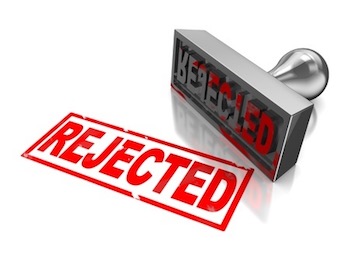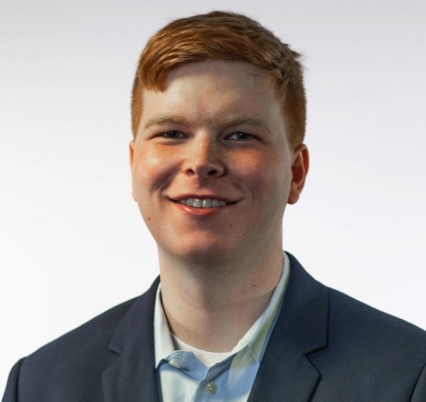“The different use of a mathematical calculation, even one that yields different or better results, does not render patent eligible subject matter.” – CAFC decision
 Two weeks after affirming the Patent Trial and Appeal Board’s (PTAB’s) decision to reject Leland Stanford Junior University’s (Stanford) claims drawn to abstract mathematical calculations and statistical modeling, the U.S. Court of Appeals for the Federal Circuit (CAFC) last week also affirmed the PTAB’s decision to hold other Stanford patent application claims patent ineligible because they are drawn to abstract mathematical calculations and statistical modeling, and similar nonpatentable subject matter.
Two weeks after affirming the Patent Trial and Appeal Board’s (PTAB’s) decision to reject Leland Stanford Junior University’s (Stanford) claims drawn to abstract mathematical calculations and statistical modeling, the U.S. Court of Appeals for the Federal Circuit (CAFC) last week also affirmed the PTAB’s decision to hold other Stanford patent application claims patent ineligible because they are drawn to abstract mathematical calculations and statistical modeling, and similar nonpatentable subject matter.
The examiner rejected claims 1 and 22–43 of U.S. Application No. 13/486,982 (‘982 application), “computerized statistical methods for determining haplotype phase,” on grounds that the claims attempt to cover patent ineligible subject matter, abstract mathematical processes and mental processes. The CAFC applied the two-step framework under Alice v. CLS Bank to determine whether the claims were patent eligible.
‘982 Application in Haplotype Date Analysis
The ‘982 application is a computerized statistical process to determine haplotype phase, which is a method of determining an indicator from which parent a gene has been inherited based on alleles. The ‘982 application specifically is a directed process for inferring in a collection of unrelated individuals the haplotype phase. The patent description highlights that, although the use of DNA sequencing methods is commonly used to provide genotype information, these methods don’t provide haplotype data.
The prior art referenced in the application for performing the same analysis includes other statistical methods, including “PHASE, fastPHASE, and Beagle.” Stanford’s ‘982 application discloses its own statistical model called PHASE-EM, which is a modified PHASE model that operates more proficiently and precisely. The ‘982 application’s written description explains that the PHASE-EM model uses a particular type of “hidden Markov model (HMM)” to predict the haplotype phase more accurately.
Alice Applied
Applying the Alice step one analysis, the court concluded that all of the claims that were examined in the ‘982 application were directed to patent ineligible subject matter. Citing Parker v. Flook, the CAFC found the claims attempted to direct patents for mathematical algorithms for performing calculations which have been held to be patent ineligible under Section 101. Claim 1 is written to cover a “computerized method of inferring haplotype phase in a collection of unrelated individuals” and “steps of receiving genotype data, imputing an initial haplotype phase, extracting the final predicted haplotype phase from the data structure, and storing it in a computer memory.”
The CAFC reasoned:
These generic steps of implementing and processing calculations with a regular computer do not change the character of claim 1 from an abstract idea into a practical application. Claim 1 recites no application, concrete or otherwise, beyond storing the haplotype phase.
Stanford argued that the increased efficiency in computing haplotype phase constituted an improvement of a technological process according to step one of Alice. The court concluded that since Stanford didn’t raise the greater computational efficiency argument for claim 1 before the Board that the CAFC would not consider the argument during this appeal.
Stanford alternatively suggested that the PHASE-EM model’s more accurate haplotype predictions advanced the claims to eligible subject matter because it made the model a practical application as opposed to an abstract idea. The CAFC found Stanford’s cited cases didn’t support their argument. The cases Stanford cited involved technological improvements that extended beyond improved accuracy of statistical predictions. The court reasoned that claim 1 is not directed to patent eligible subject matter because “[t]he different use of a mathematical calculation, even one that yields different or better results, does not render patent eligible subject matter.”
Alice’s Lifeline
Step two of the Alice inquiry requires that courts examine each of the claim elements individually and in order to determine “whether any additional limitations amount to significantly more than the ineligible concept” or in other words, a claim element must do more than saying the abstract idea and adding the words “apply it” to be patent eligible. The court commonly uses step two as a lifeline to rescue a claim deemed directed to non-statutory subject matter at step one.
The CAFC applied this step of the Alice inquiry to claim one and found that claim one was not saved. The court found no inventive concept that would warrant treating the concepts of claim 1 as patent eligible subject matter. The prior art illustrated the calculated steps completed and data received are well understood based on the written description. Since claim one doesn’t require any specialized memory or processor, the court reasoned that the hardware is generic and the claim is thus not elevated to patentable subject matter or inventive.
Stanford faulted the PTAB for not evaluating the elements of claim one as an ordered combination. The specific combination of steps makes the process novel and provides increased accuracy over the other cited prior art. The CAFC found this argument unpersuasive because it failed to explain how examining the elements of the claim in an order other than the one proffered yielded a patent eligible application. The different combinations are not enough to transform claim one from an abstract idea due to increased accuracy for haplotype predictions.
The court concluded that the remaining claims contain no limitations that transform the claims into patent eligible subject matter. The remaining claims only further define the mathematical calculations laid out in claim one meaning they too are directed to nonpatentable subject matter.
The CAFC concluded that Stanford’s remaining arguments were unpersuasive and the PTAB’s conclusions regarding the claims being drawn to patent ineligible subject matter under Section 101 were affirmed.
Image rights acquired by 123RF.com

![[IPWatchdog Logo]](https://ipwatchdog.com/wp-content/themes/IPWatchdog%20-%202023/assets/images/temp/logo-small@2x.png)

![[Advertisement]](https://ipwatchdog.com/wp-content/uploads/2024/04/UnitedLex-May-2-2024-sidebar-700x500-1.jpg)
![[Advertisement]](https://ipwatchdog.com/wp-content/uploads/2024/04/Artificial-Intelligence-2024-REPLAY-sidebar-700x500-corrected.jpg)
![[Advertisement]](https://ipwatchdog.com/wp-content/uploads/2024/04/Patent-Litigation-Masters-2024-sidebar-700x500-1.jpg)

![[Advertisement]](https://ipwatchdog.com/wp-content/uploads/2021/12/WEBINAR-336-x-280-px.png)
![[Advertisement]](https://ipwatchdog.com/wp-content/uploads/2021/12/2021-Patent-Practice-on-Demand-recorded-Feb-2021-336-x-280.jpg)
![[Advertisement]](https://ipwatchdog.com/wp-content/uploads/2021/12/Ad-4-The-Invent-Patent-System™.png)






Join the Discussion
6 comments so far.
concerned
March 31, 2021 10:55 amAs an “one and done” inventor, I call it how much justice (or injustice) can I afford?
Anon
March 31, 2021 09:56 amipguy,
You make a good point – in legal parlance, what you point to is called “chilling.”
ipguy
March 30, 2021 08:27 pmKeep in mind, Stanford has the cash to fight this all the way to the Federal Circuit and SCOTUS. Most applicants don’t have that luxury. However, even when a Microsoft or Google has been unreasonably rejected under 101 grounds, unless the application is viewed as being quite lucrative in the long-term, companies like that will not fight all the way to the SCOTUS because of the cost-benefit analysis.
TFCFM
March 30, 2021 03:09 pmIs there any meaningful difference between the claims in this Stanford patent and the claims in the Stanford patent for which the CAFC affirmed the PTAB’s holding of ineligibility in its 11 March 2021 decision? (An earlier post by the same author, I think, described that decision.) The claims seem substantially identical (these claims, like those, reciting a method of performing a calculation using a computer).
Is there any difference in the claims that really held out any reasonable expectation of a difference in the outcome?
concerned
March 30, 2021 11:18 amThe PTAB used “mental process” as a new grounds of rejection on my application.
The ensuing response will point out that the official record reveals that (millions of) working professionals and experts could not perform the solution physically without the inventive concept, therefore, describing my claims as a mental process is a misclassification.
The two examiners I had during the prosecution did not raise such an unreasonable mental process rejection as they read and was working daily with the official record. The examiners raised other unsupported rejections.
I asked my attorney how he feels the PTAB will explain why millions of working professionals and experts could not perform the solution for decades and allowed State and Federal laws to be broken if it is just a mental process? My attorney stated the PTAB will probably not even address the question.
Accordingly, just write crazy rejections, facts, evidence and explanations do not apply unless the applicant happens to be in front of the Berkheimer court.
Pro Say
March 30, 2021 10:22 amSay their names . . .
Stanford: This time it was your inventors Nicholas Johnson, Wing H. Wong, and Hua Tang who were denied the patent they clearly earned and deserved.
Without patent eligibility for all areas of innovation, how many other deserving Stanford inventors will be so denied in the years and decades to come?
How will you feel watching others steal with impunity the very innovations that your folks worked so hard to create and develop?
How many 10’s and 100’s of millions of dollars a year will Stanford lose in the years and decades to come from such IP robbery?
Congress needs to hear from you.
And all you other 100’s of Universities and Colleges?
Stanford is not alone. Unless you want what’s happening to Stanford to happen to you and your innovators as well, Congress needs to hear from you, too.
ASAP.